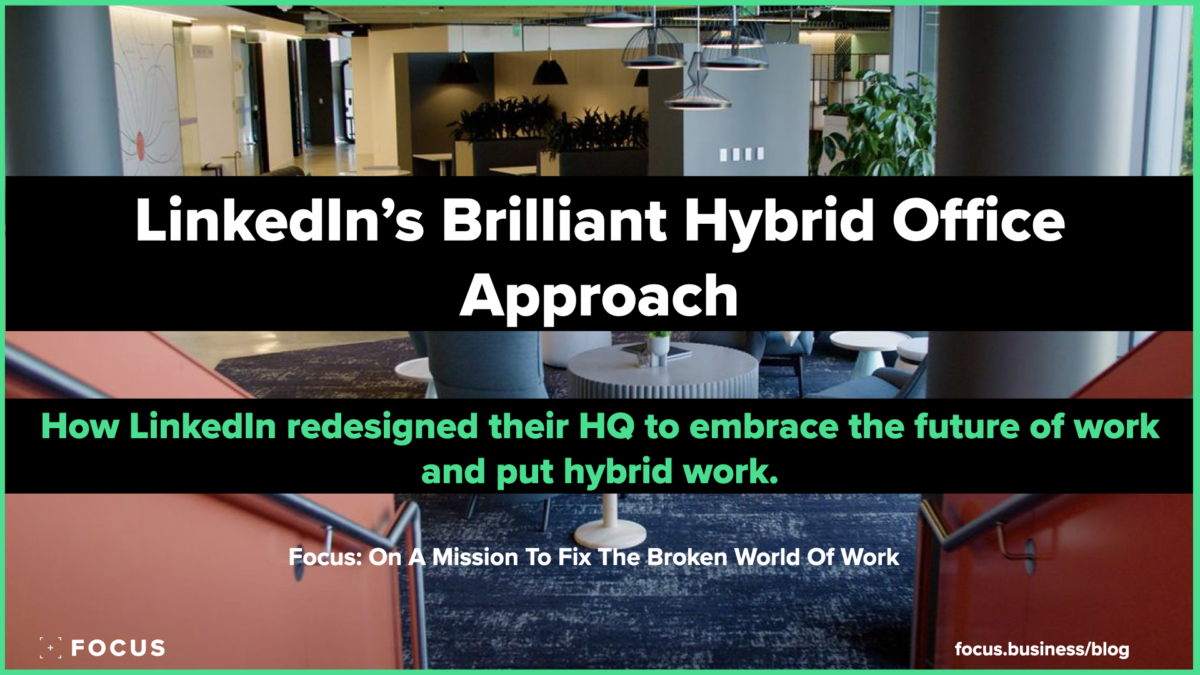Something that many companies are attempting is to reshape their work to enable hybrid work.
LinkedIn has been deliberate in their approach to reshaping their work for the hybrid office to leverage tech efficiently to encourage better hybrid working environments.
Having worked in small family businesses to large listed companies, the office is a workplace that can often be a competitive advantage and create environments of trust centred around people and performance.
LinkedIn’s reshape is one of the standard redesigns to be proudly shown and here is a great video (below) from the WSJ.
LinkedIn Hybrid Office – Workplace Design
The Breakdown:
The name: “Building 1”, it spreads across six floors and is designed for up to 1500 people.
What did they change?
- Old: 1080 workstations – 1 employee 1 desk
- New: 569 workstations with 75 different types of seating
- Changing other workspaces into new spaces and a variety of spaces to encourage deep work and focus and quick collaborative meetings.
- Desks turned into seats to encourage more flexible working styles and use cases (not just booths)
- LinkedIn adopted to ‘Neighbourhoods’ – half alternative seating and work spaces and half traditional where teams can work (these are currently non-designated seats, not restricting collaboration and encouraging hotdesking).
- Designed with people first in mind: their methodology was: the amount of time in the space x activity with ergonomics = output.
- Unassigned decks so neighbourhoods are completely flexible
- Meeting Rooms Reimagined
- LinkedIn attempted to remove the formalities in formal meeting rooms to enable hybrid work (those working from home versus those sitting in the meeting room)
- Hybrid collaboration is key, with the new tech built into the meetings room where cameras point at the whiteboard so it makes it a clear and collaborative experience is key to embracing hybrid work
- Introduced new co-working spaces
- One new space is the cafe, coffee space and co-working space (this is becoming more common and reducing the need for many 1-2-1’s from going out for coffee or having to meet in other locations)
- Adding in more booths – smaller time periods and collaboration space
- “Leading with trust”
One standout was the LinkedIn approach to the future of work being an opportunity to experiment and learn from the data.
Is this the future of the office? Right now it is the closest to companies really rethinking work and rethinking what workplaces should be.
Need More Helpful Resources?
Hybrid Work Tools & Hybrid Software Guide
The Hybrid Work & Hybrid Meetings Guide
How To Win At Hybrid Office Politics?
Leaders Letter 85 – The Only Way Non-Traditional Office Work Works Is If Leaders Lead

